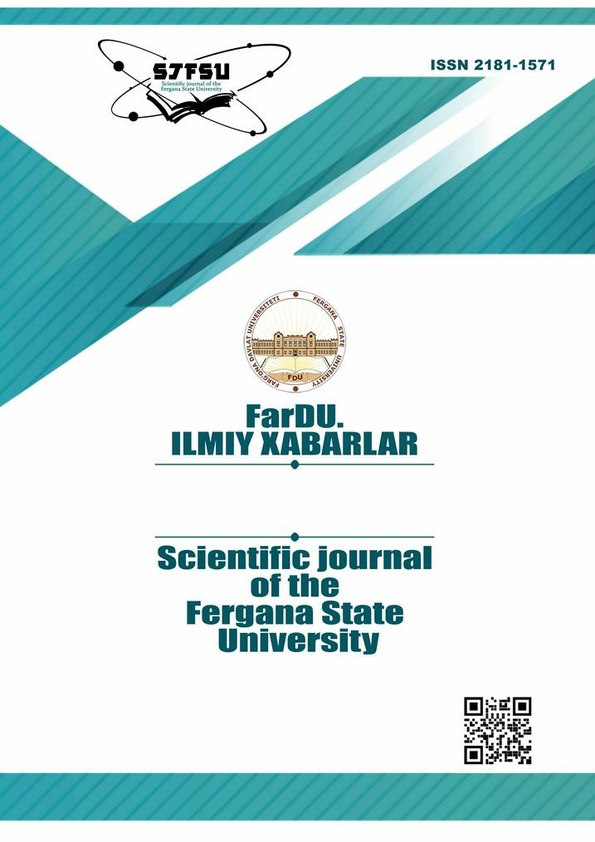PROBLEMS OF TEACHING MEDIA TEXTS TO C1 LEVEL STUDENTS
Keywords:
teaching, media texts, teaching problems, C1 level students, written media, periodicals, newspapers, television, English language, technology.Abstract
In this article, we have discussed the problems of teaching media texts to C1 level students. Newspapers, periodicals, television, films, radio, computer software and the Internet are just a few examples of media texts that are covered in English classes. Understanding and interpreting media requires a high level of English proficiency equivalent to level C1 on the European grading scale (CEFR). But the problem of teaching, methods and approaches of media texts to C1 level students has not yet been studied. This article considers the problems within this frame.
References
Pan-European competences of foreign language proficiency: Study, training, assessment [Text]. - Moscow: MGLU, 2005.
Dobrosklonskaya, T.G. Questions of the study of media texts (the experience of the study of modern English media language). 2nd edition, stereotypical [Text] / T.G. Dobrosklonskaya. - M.: Editorial URSS, 2005.
Safonova, V.V. Development of the culture of oral speech perception in teaching a foreign language: modern methodological problems and ways to solve them [Text] / V.V. Safonova // Foreign languages at school. - 2011. - No. 5. - pp. 2-9.
Bim, I.L. Some actual problems of modern foreign language teaching/ I.L. Bim // Foreign languages at school. - 2001. - No. 4. - p.15
Bogomolov, A.N. Mass communication media: culturological and didactic aspects: abstract. diss. cand. culturol. sciences: 24.00.04 / Bogomolov Andrey Nikolaevich. - M., 1997. - 24 p.
Budnik, A.S. Methodology for the formation of intercultural communicative competence of high school students through an elective video course: profile school, English: abstract. Candidate of Pedagogical Sciences: 13.00.02 / Budnik Anastasia Sergeevna. - Moscow, 2015 - 27 p.
Anurova, I.V. Formation of functional socio-cultural literacy at the middle stage of schooling with in-depth study of a foreign language (based on the material of the Spanish language): Candidate of Pedagogical Sciences: 13.00.02 / Anurova Irina Vladimirovna. - Moscow., 2001. – 270-p
Karasik, V.I. Etiquette and English / V.I. Karasik // Foreign languages at school. - 1993. - No. 2. - pp.57-59.
Balashova, E. F. Features of the use of media texts in teaching business English in the system of additional professional education: abstract. dis. ... Candidate of Pedagogical Sciences: 13.00.02 / Balashova Elena Fedorovna. Moscow., 2012. - 23 p.
Agapova, S.G. Fundamentals of interpersonal and intercultural communication - (English) /S.G. Agapova. - Series "Higher education". - Rostov N./D.: Phoenix, 2004. - 288 p.
Hennessey, B. Writing Feature Articles. A practical guide to methods and markets. - London: Focal Press, 1989. - 237 p.
Sadokhin, A.P. Theory and practice of intercultural communication: Studies.handbook for universities /A.P. Sadokhin. - M.: UNITY-DANA, 2004. – 271.p
Tukhtaeva K.D. The Importance of Media Texts in Linguistics and Information delivery in Media Communication. – British View Multidisciplinary Journal. -2022, pp. 63-69.
Tukhtaeva K.D. Importance and Peculiarities of Media Communications and Media Texts. – Gospodarka Innowasje. Volume 26 (2022), pp.31-40.
https://www.insightpublications.com.au/what-to-look-out-for-when-analysing-a-media-text/
Downloads
Published
Issue
Section
License
Copyright (c) 2023 Scientific journal of the Fergana State University

This work is licensed under a Creative Commons Attribution-NonCommercial-NoDerivatives 4.0 International License.

